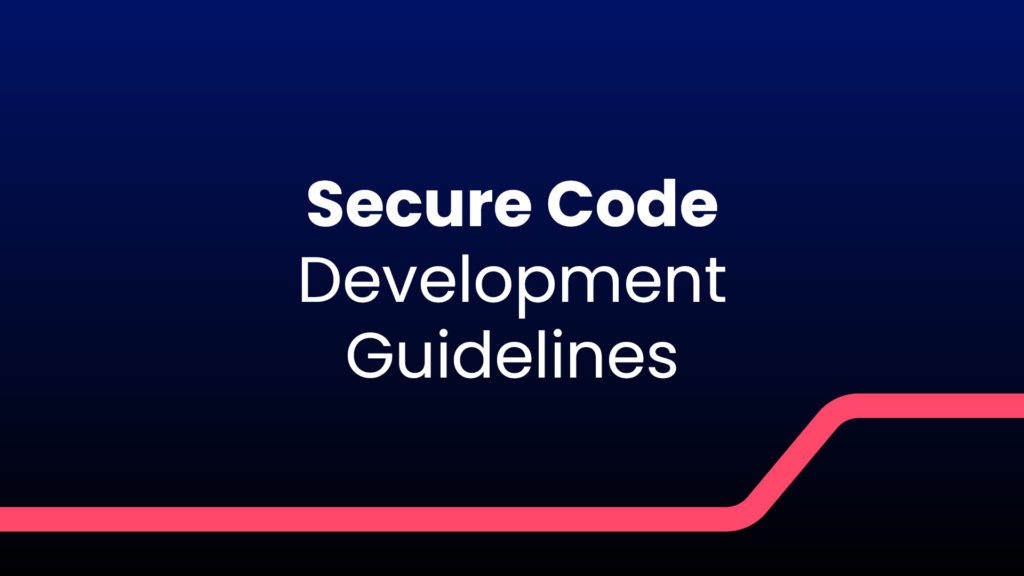In 2020, data breaches affected 300.6 million people. Cyberattacks are the most common source of compromise. Many factors contribute to the prevalence of intrusions, including missing or insufficient security protocols, defects, bugs, and other vulnerabilities introduced through poor coding practices. Secure code guidelines for developers are best practices that not only help to prevent flaws that threaten enterprise security, but allow developers to detect and eliminate errors when they do occur.
What Is Secure Code Development?
Cybercriminals are always on the lookout for unresolved vulnerabilities and how they can exploit them. Security experts have noticed the same few programming errors are the source of the majority of intrusions. Secure code development is intended to enable and maintain software security to minimize the threat of intrusion that can lead to loss of intellectual property, ransom attacks, and appropriation of personal information, to name only a few examples. It is adherence to a set of guidelines that are designed to protect the enterprise through the implementation of security controls to mitigate common software vulnerabilities.
The Importance of Secure Coding Development
When developers write code, they approach it with a perspective of how the user will accomplish specific tasks based on use cases and functional requirements. Cybercriminals are interested in what the application does or can be made to do, whether it was intended behavior or not. Their approach is that anything not explicitly denied is allowed. Security requirements and abuse cases must be considered early in the software development lifecycle to prevent inadvertently allowing misuse or exploitation of the application by attackers.
Common security vulnerabilities and the potential consequences include:
- Broken access control – Unauthorized access to admin controls
- Broken authentication – Unauthorized access to user accounts
- Cross-site scripting – Allows the execution of the attacker’s scripts that can allow them to hack websites, hijack user sessions, or redirect traffic to malicious sites
- Injection flaws – SQL, NoSQL, OS, and LDAP injections causing the system to execute actions like accessing customer data
- Insecure deserialization – Remote code execution
- Insufficient logging and monitoring – Virtually unlimited time for cybercriminals to execute prolonged attacks
- Security misconfiguration – Disclosure of sensitive information
- Sensitive data exposure – Personally identifiable information or account credentials possibly breached
- Using components with known vulnerabilities – Potential data loss or hijacking of servers
- XML external entities – Denial of service, forged server side requests, and confidential data disclosure
Secure Software Development Stages
Security considerations initially occurred after software was released to production, leaving the enterprise vulnerable to intrusion for sometimes months before being remediated. An SSDLC or secure software development life cycle plans for attempted exploitation and actively prevents potential vulnerabilities from the requirements stage through development and delivery. It involves putting security requirements into the initial planning stages alongside functional and technical requirements, conducting an architecture risk analysis during the design phase, and adding security testing into the test first methodology of the software development phase.
Though each enterprise and type of software may have varying requirements, every phase of the SDLC must be considered in terms of security.
Mapping Security Requirements
An example of mapping security requirements would be to test against functional requirements to uncover opportunities for exploitation. A functional requirement for users to be able to access their accounts should be tested for security to ensure users could reach only their account and no one else’s. Additionally, a user should only have the required access, not administrative privileges.
Software Design
In the design phase, in-scope functional requirements detail how the software should work. Security requirements should focus on how it shouldn’t work and how to thwart misuse. Incorporating security into the design phase significantly mitigates human error and oversight while lowering overall risk and associated costs.
Software Development
Follow secure coding guidelines, such as those from OWASP. Additional steps to secure existing code may include the following:
- Read-only, parameterized SQL queries
- Validation of user input prior to processing
- Data sanitization before returning data to the user
- Searching for and resolving known vulnerabilities of any open source library prior to use
Software Deployment
Before deploying software, it should pass a final comprehensive testing cycle for compliance to design and requirements. A fully developed SSDLC should have as much testing as possible incorporated into the automated CI/CD pipeline to prevent release until all tests are passed successfully. Tests may include:
- Showing the applications critical paths
- Unit tests for correctness
- Automated swapping of application secrets for use in the production environment.
Secure Code Development Costs
Developing secure code comes at a cost. The entire SSDLC is initially longer as new tests must be added into the process. There is also a risk to the projected timeline from potential vulnerabilities, as the number and resolution difficulty come into play. Additionally, any changes require new rounds of testing for the entire application. However, the financial impacts of not executing secure coding practices far outweigh the investment.
The further into the cycle bugs and defects are found, the more expensive they are to resolve. IBM’s System Sciences Institute reports finding a bug during implementation costs six times more to fix than one discovered during the design phase. Vulnerabilities discovered during testing cost 15 times more to resolve than those found during design. You can calculate the costs using various estimation models, such as COCOMO-II.
Technologies & Tools Recommended for Secure Coding
Many tools and technologies are available for implementing secure coding development. Using the right tools allows your teams to optimize the SSDLC and enhance software security faster and more efficiently. SOOS offers a valuable tool that can be integrated into the CI/CD pipeline, SOOS was designed by a developer for DevSecOps teams to ensure secure code throughout the SSDLC. This comprehensive solution provides everything you need for SCA solutions with both unlimited scanning and users.
Risks will always exist, particularly with open-source software. Every day, cybercriminals are looking for ways to exploit your software’s vulnerabilities. It is up to you to protect your company and your users by eliminating risk. SOOS takes your enterprise risk to near zero for one low flat fee.













